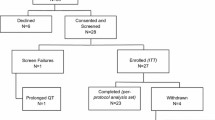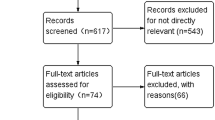Abstract
For the medical treatment of early breast cancer, aromatase inhibitors (AIs) such as anastrozole, letrozole, and exemestane are more effective than selective estrogen-receptor modulators (SERMs) such as tamoxifen (TAM). However, the adverse events associated with AIs are different from those associated with SERMs. Hot flushes, gynecological disorders, and thrombosis are more frequent in patients treated with TAM than in those treated with AIs. Conversely, osteoporosis, fractures, joint symptoms, and myalgia are more common in patients receiving AIs. Osteoporosis and bone fractures resulting from osteoporosis are important issues for patients treated with AIs. The precise management of bone health, in strict accordance with clinical guidelines, is vital in patients receiving AIs. AI-related joint symptoms are also one of the most important considerations for patients taking AIs. AI-related joint symptoms are the most common reason for the discontinuation of AIs. Confirmed management strategies for AI-related joint symptoms are unavailable at present. In patients receiving AIs, long-term adverse events (for example, those occurring as a result of changing lipid metabolism) remain unclear. There is a clear need to elucidate AI-related adverse events over the long term and to establish management strategies for AI-related adverse events, such that AIs can be used safely in patients with breast cancer over long periods of time.
Similar content being viewed by others
References
Early Breast Cancer Trialist’ Group (2005) Effects of chemotherapy and hormonal therapy for early breast cancer on recurrence and 15-year survival: an overview of the randomised trials. Lancet 365:1687–1717
Howell A, Cuzick J, Baum M, et al. (2005) Results of the ATAC (Arimidex, Tamoxifen, Alone or in Combination) trial after completion of 5 years’ adjuvant treatment for breast cancer. Lancet 365:60–62
Buzdar A, Howell A, Cuzick J, et al. (2006) Comprehensive sideeffect profile of anastrozole and tamoxifen as adjuvant treatment for early-stage breast cancer: long-term safety analysis of the ATAC trial. Lancet Oncol 7:633–643
Coates AS, Keshaviah A, Thurlimann B, et al. (2007) Five years of letrozole compared with tamoxifen as initial adjuvant therapy for postmenopausal women with endocrine-responsive early breast cancer: update of study BIG 1–98. J Clin Oncol 25:486–492
Crivellari D, Sun Z, Coates AS, et al. (2008) Letrozole compared with tamoxifen for elderly patients with endocrine-responsive early breast cancer: the BIG 1-98 trial. J Clin Oncol 26:1972–1979
Coombes RC, Hall E, Gibson LJ, et al. (2004) A randomized trial of exemestane after 2 to 3 years of tamoxifen therapy in postmenopausal women with primary breast cancer. N Engl J Med 350:1081–1092
Coombes RC, Kilburn LS, Snowdon CF, et al. (2007) Survival and safety of exemestane versus tamoxifen after 2–3 years’ tamoxifen treatment (Intergroup Exemestane Study): a randomised controlled trial. Lancet 369:559–570
Jakesz R, Jonat W, Gnant M, et al. (2005) Switching of postmenopausal women with endocrine-responsive early breast cancer to anastrozole after 2 years’ adjuvant tamoxifen: combined results of ABCSG trial 8 and ARNO 95 trial. Lancet 366:455–462
Boccardo F, Rubagotti A, Guglielmini P, et al. (2006) Switching to anastrozole versus continued tamoxifen treatment of early breast cancer. Updated results of the Italian Tamoxifen Anastrozole (ITA) trial. Ann Oncol 17(Suppl 7):vii 10–14
Goss PE, Ingle JN, Martino S, et al. (2005) Randomized trial of letrozole following tamoxifen as extended adjuvant therapy in receptor-positive breast cancer: updated findings from NCIC CTG MA.17. J Natl Cancer Inst 97:1262–1271
Goss PE, Ingle, JN, Pater JL, et al. (2008) Late extended adjuvant treatment with letrozole improves outcome in women with earlystage breast cancer who complete 5 years of tamoxifen. J Clin Oncol 26:1948–1955
Jakesz R, Greil R, Gnant M, et al. (2007) Extended adjuvant therapy with anastrozole among postmenopausal breast cancer patients: results from the randomized Austrian Breast and Colorectal Cancer Study Group Trial 6a. J Natl Cancer Inst 99:1845–1853
Mamounas EP, Jeong JH, Wickerham DL, et al. (2008) Benefit from exemestane as extended adjuvant therapy after 5 years of adjuvant tamoxifen: intention-to-treat analysis of the National Sur gical Adjuvant Breast and Bowel Project B-33 trial. J Clin Oncol 26:1965–1971
Saika M, Inoue D, Kido S, et al. (2001) 17 Beta-estradiol stimulates expression of osteoprotegerin by a mouse stromal cell line, ST-2, via estrogen receptor-alpha. Endocrinology 142:2205–2212
Shevde NK, Bendixen AC, Dienger KM, et al. (2000) Estrogens suppress RANK ligand-induced osteoclast differentiation via a stromal cell independent mechanism involving c-Jun repression. Proc Natl Acad Sci U S A 97:7829–7834
Kousteni S, Bellido T, Plotkin LI, et al. (2003) Nongenotropic, sex-nonspecific signaling through the estrogen or androgen receptors: dissociation from transcriptional activity. Cell 104:719–730
Anonymous (2000) Osteoporosis prevention, diagnosis, and therapy. NIH Consensus Statement. 17:1–45
Eastell R, Adams JE, Coleman RE, et al. (2008) Effect of anastrozole on bone mineral density: 5-year results from the Anastrozole, Tamoxifen, Alone or in Combination trial 18233230. J Clin Oncol 26:1051–1057
Forbes JF, Cuzick J, Buzdar A, et al. (2008) Effect of anastrozole and tamoxifen as adjuvant treatment for early-stage breast cancer: 100-month analysis of the ATAC trial. Lancet Oncol 9:45–53
Coleman RE on behalf of ATAC Trialist’ Group (2008) Long-term effects of anastrozole on bone mineral density: 7-year results from the ATAC trial. J Clin Oncol 26: (May suppl; abstr act 587)
Coleman RE, Banks LM, Girgis SI, et al. (2007) Skeletal effects of exemestane on bone-mineral density, bone biomarkers, and fracture incidence in postmenopausal women with early breast cancer participating in the Intergroup Exemestane Study (IES): a randomised controlled study. Lancet Oncol 8:119–127
Perez EA, Josse RG, Pritchard KI, et al. (2006) Effect of letrozole versus placebo on bone mineral density in women with primary breast cancer completing 5 or more years of adjuvant tamoxifen: a companion study to NCIC CTG MA.17. J Clin Oncol 24: 3629–3635
Lonning PE, Geisler J, Krag LE, et al. (2005) Effects of exemestane administered for 2 years versus placebo on bone mineral density, bone biomarkers, and plasma lipids in patients with surgically resected early breast cancer. J Clin Oncol 23:5126–5137
Geisler J, Lonning PE, Krag LE, et al. (2006) Changes in bone and lipid metabolism in postmenopausal women with early breast cancer after terminating 2-year treatment with exemestane: a randomised, placebo-controlled study. Eur J Cancer 42:2968–2975
Hillner BE, Ingle JN, Chlebowski RT, et al. (2003) American Society of Clinical Oncology 2003 update on the role of bisphosphonates and bone health issues in women with breast cancer. J Clin Oncol 21:4042–4057
Donnellan PP, Douglas SL, Cameron DA, et al. (2001) Aromatase inhibitors and arthralgia. J Clin Oncol 19:2767
Crew KD, Greenlee H, Capodice J, et al. (2007) Prevalence of joint symptoms in postmenopausal women taking aromatase inhibitors for early-stage breast cancer. J Clin Oncol 25:3877–3883
Buzdar A, on behalf of the ATAC Trialist’ Group (2006) Clinical features of joint symptoms observed in the ‘Arimidex’ Tamoxifen, Alone or in Combination (ATAC) trial. J Clin Oncol 2006 Annual Meeting Proceedings Part I 124:551
Morales L, Pans S, Paridaens R, et al. (2007) Debilitating musculoskeletal pain and stiffness with letrozole and exemestane: associated tenosynovial changes on magnetic resonance imaging. Breast Cancer Res Treat 104:87–91
Morales L, Pans S, Verschueren K, et al. (2008) Prospective study to assess short-term intra-articular and tenosynovial changes in the aromatase inhibitor-associated arthralgia syndrome. J Clin Oncol 26:3147–3152
Dietrich W, Haitel A, Holzer G, et al. (2006) Estrogen receptorbeta is the predominant estrogen receptor subtype in normal human synovia. J Soc Gynecol Investig 13:512–517
Chagin AS, Chrysis D, Takigawa M, et al. (2006) Locally produced estrogen promotes fetal rat metatarsal bone growth; an effect mediated through increased chondrocyte proliferation and decreased apoptosis. J Endocrinol 188:193–203
Hoegh-Andersen P, Tanko LB, Andersen TL, et al. (2004) Ovariectomized rats as a model of postmenopausal osteoarthritis: validation and application. Arthritis Res Ther 6:R169–180
Pansini F, Albertazzi P, Bonaccorsi G, et al. (1994) The menopausal transition: a dynamic approach to the pathogenesis of neurovegetative complaints. Eur J Obstet Gynecol Reprod Biol 57:103–109
Fontaine C, Meulemans A, Huizing M, et al. (2008) Tolerance of adjuvant letrozole outside of clinical trials. Breast
Hozumi Y, Hakamata Y, Sasanuma H, et al. (2002) Effects of anastrozole on lipid metabolism compared with tamoxifen in rats. Breast Cancer Res Treat 76:131–136
Goss PE, Qi S, Cheung AM, et al. (2004) Effects of the steroidal aromatase inhibitor exemestane and the nonsteroidal aromatase inhibitor letrozole on bone and lipid metabolism in ovariectomized rats. Clin Cancer Res 10:5717–5723
Goss PE, Qi S, Josse RG, et al. (2004) The steroidal aromatase inhibitor exemestane prevents bone loss in ovariectomized rats. Bone 34:384–392
Banerjee S, Smith IE, Folkerd L, et al. (2005) Comparative effects of anastrozole, tamoxifen alone and in combination on plasma lipids and bone-derived resorption during neoadjuvant therapy in the IMPACT trial. Ann Oncol 16:1632–168
Sawada S, Sato K, Kusuhara M, et al. (2005) Effect of anastrozole and tamoxifen on lipid metabolism in Japanese postmenopausal women with early breast cancer. Acta Oncol 44:134–141
Elisaf MS, Bairaktari ET, Nicolaides C, et al. (2001) Effect of letrozole on the lipid profile in postmenopausal women with breast cancer. Eur J Cancer 37:1510–1513
Wasan KM, Goss PE, Pritchard PH, et al. (2005) The influence of letrozole on serum lipid concentrations in postmenopausal women with primary breast cancer who have completed 5 years of adjuvant tamoxifen (NCIC CTG MA.17L). Ann Oncol 16:707–715
Atalay G, Dirix L, Biganzoli L, et al. (2004) The effect of exemestane on serum lipid profile in postmenopausal women with metastatic breast cancer: a companion study to EORTC Trial 10951, “Randomized phase II study in first line hormonal treatment for metastatic breast cancer with exemestane or tamoxifen in postmenopausal patients”. Ann Oncol 15:211–217
Markopoulos C, Polychronis A, Zobolas V, et al. (2005) The effect of exemestane on the lipidemic profile of postmenopausal early breast cancer patients: preliminary results of the TEAM Greek sub-study. Breast Cancer Res Treat 93:61–66
Breast International Group (BIG) 1-98 Collaborative Group (2005) A Comparison of letrozole and tamoxifen in postmenopausal women with early breast cancer. New Engl J Med 353: 2747–2757
Thurlimann B, Keshaviah A, Coates AS, et al. (2005) A comparison of letrozole and tamoxifen in postmenopausal women with early breast cancer. N Engl J Med 353:2747–2757
Bender CM, Sereika SM, Brufsky AM, et al. (2007) Memory impairments with adjuvant anastrozole versus tamoxifen in women with early-stage breast cancer. Menopause 14:995–998
Gerber B, Krause A, Reimer T, et al. (2006) Anastrozole versus tamoxifen treatment in postmenopausal women with endocrine-responsive breast cancer and tamoxifen-induced endometrial pathology. Clin Cancer Res 12:1245–1250
Fallowfield L, Cella D, Cuzick J, et al. (2004) Quality of life of postmenopausal women in the Arimidex, Tamoxifen, Alone or in Combination (ATAC) Adjuvant Breast Cancer Trial. J Clin Oncol 22:4261–4271
Cella D, Fallowfield L, Barker P, et al. (2006) Quality of life of postmenopausal women in the ATAC (“Arimidex”, Tamoxifen, Alone or in Combination) trial after completion of 5 years’ adjuvant treatment for early breast cancer. Breast Cancer Res Treat 100:273–284
Fallowfield LJ, Bliss JM, Porter LS, et al. (2006) Quality of life in the intergroup exemestane study: a randomized trial of exemestane versus continued tamoxifen after 2 to 3 years of tamoxifen in postmenopausal women with primary breast cancer. J Clin Oncol 24:910–917
Whelan TJ, Goss PE, Ingle JN, et al. (2005) Assessment of quality of life in MA.17: a randomized, placebo-controlled trial of letrozole after 5 years of tamoxifen in postmenopausal women. J Clin Oncol 23:6931–6940
Thomas R, Williams M, Marshall C, et al. (2008) Switching to letrozole or exemestane improves hot flushes, mood and quality of life in tamoxifen intolerant women. Br J Cancer 98:1494–1499
Author information
Authors and Affiliations
Corresponding author
About this article
Cite this article
Yamamoto, Y., Iwase, H. Safety profiles of aromatase inhibitors and selective estrogen-receptor modulators in the treatment of early breast cancer. Int J Clin Oncol 13, 384–394 (2008). https://doi.org/10.1007/s10147-008-0828-5
Received:
Published:
Issue Date:
DOI: https://doi.org/10.1007/s10147-008-0828-5




